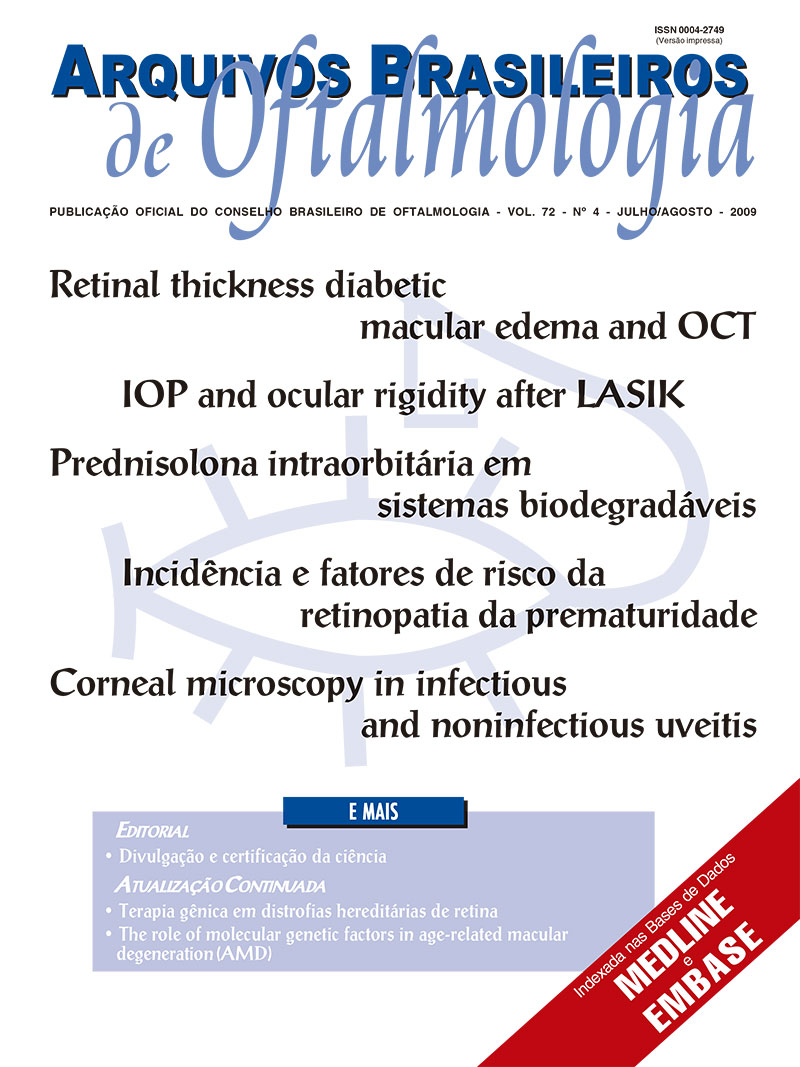PURPOSES: To determine the incidence of retinopathy of prematurity and assess the main risk factors involved in its development. METHODS: Retrospective cohort study carried out from January 2004 to December 2006, at University Hospital Onofre Lopes, Natal (RN) - Brazil. The sample was composed of 663 newborns, with less than or equal to 36 weeks of gestational age and/or birth weight less than or equal to 1,500 g, submitted to the protocol of retinopathy of prematurity in the ophthalmology department of the hospital. The variables were: gender, birth weight, gestational age, duration of oxygen therapy, mechanical ventilation, sepsis and blood transfusion. Data were analyzed through the chi-squared test, Fisher's exact test and logistic regression model. RESULTS: Of the 663 cases, retinopathy of prematurity occurred in 414 (62.4%). Of the total sample, 338 (51.0%) were male and 282 (42.5%) female. Mean and standard deviation of weight, gestational age and duration of oxygen therapy were, respectively, 1,334.9 ± 345.6 g, 31.9 ± 2.3 weeks and 10.0 ± 14.0 days. The incidence of retinopathy in premature newborns in the period was 62.4%, 58.0% of cases in 2004, 67.2% in 2005 and 63.0% in 2006. The multiple logistic regression analysis showed that the weight less than 1,000 g (p<0.001; adjOR=17.18, CI= 6.52-45.29) and between 1,000 g and 1,500 g (p=0.002; adjOR -4.20 CI= 1.68-10.48), the time of oxygen lounger than 20 days (p=0.022; adjOR=3.40, CI= 1.19-9.69) and blood transfusion (p=0.022; adjOR -2.06, CI= 1.11-3.83) are independent factors for the disease. CONCLUSIONS: The study showed a high incidence of the disease in the service. A low birth weight, a prolonged oxygen therapy and blood transfusion are factors associated with the development of retinopathy of prematurity. Gestational age is not a reliable parameter for screening of newborns in the service.
Keywords: Retinopathy of prematurity; Risk factors; Newborn infant, premature; Newborn infant, low birth weight
